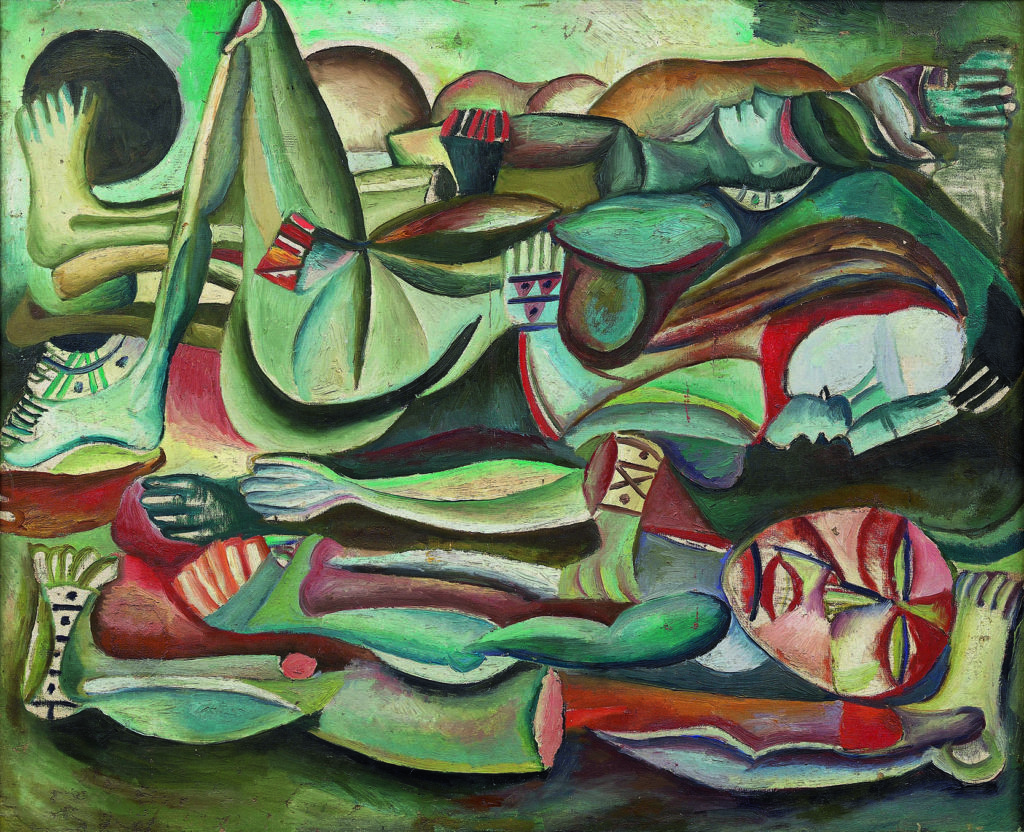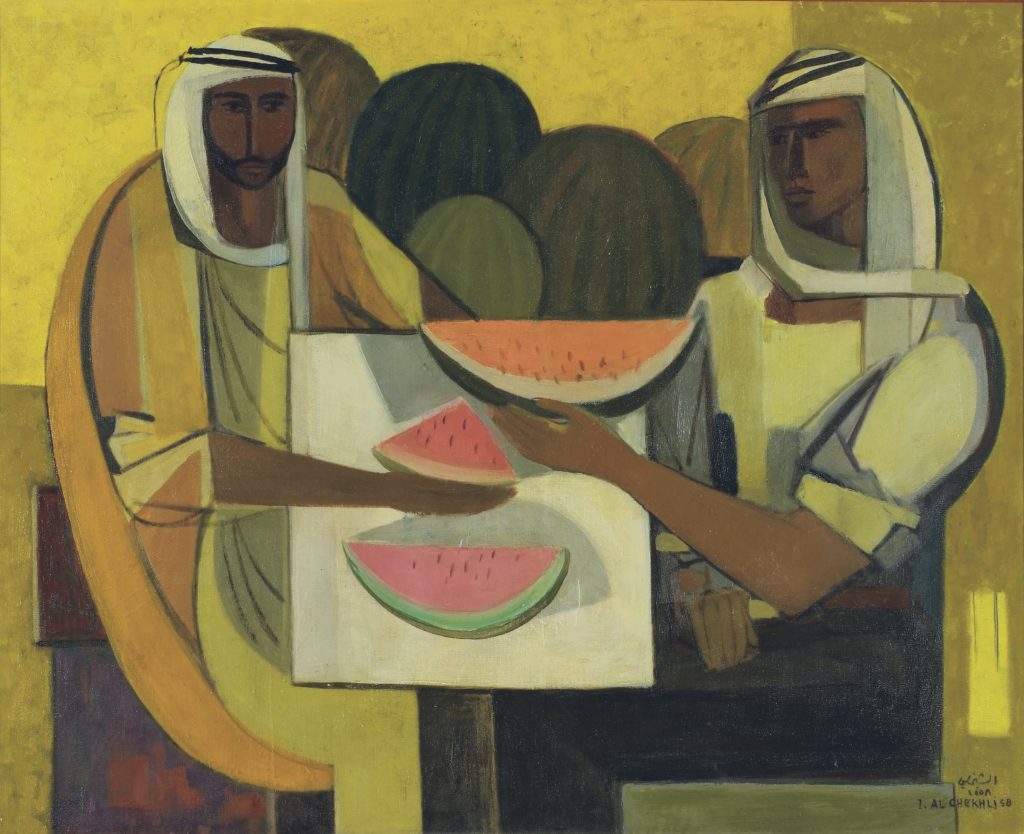
Jul 21, 1959 - Oct 19, 1959
State Museum of Oriental Art, Moscow, USSR
Improved political relations between the USSR and Iraq at the end of 1950s were followed by dynamic cultural growth. Collaboration began immediately after the 14 July Revolution, also known as the 1958 Iraqi coup d’etat, which resulted in the overthrow of the pro-British Hashemite monarchy and the establishment of the Iraqi Republic. As the Republic emerged under the leadership of Abd al-Karim Qasim, it gained enthusiastic support in the USSR. The geopolitical region of the Middle East, and of Iraq in particular, acquired strategic importance in the 1950s as a Cold War battleground, and in addition to political, economic, and military activities, the young Iraqi Republic allocated substantial resources to cultural diplomacy, presenting the country’s story to the USSR through history, art, and culture.
The year 1959 was filled with cross-cultural activities, both in Iraq and the Soviet Union. On May 5, 1959, an official bilateral agreement was signed between the two countries promoting mutual understanding and cultural exchange. A climax of this program was a major retrospective traveling exhibition of Iraqi art, dedicated to the First Anniversary of the Iraqi Republic, held from July 21 to October 19 in Moscow’s State Museum of Oriental Art, and subsequently at Baku’s Azerbaijan National Museum of Art, and the Museum of Western and Eastern Art in Odessa, USSR.
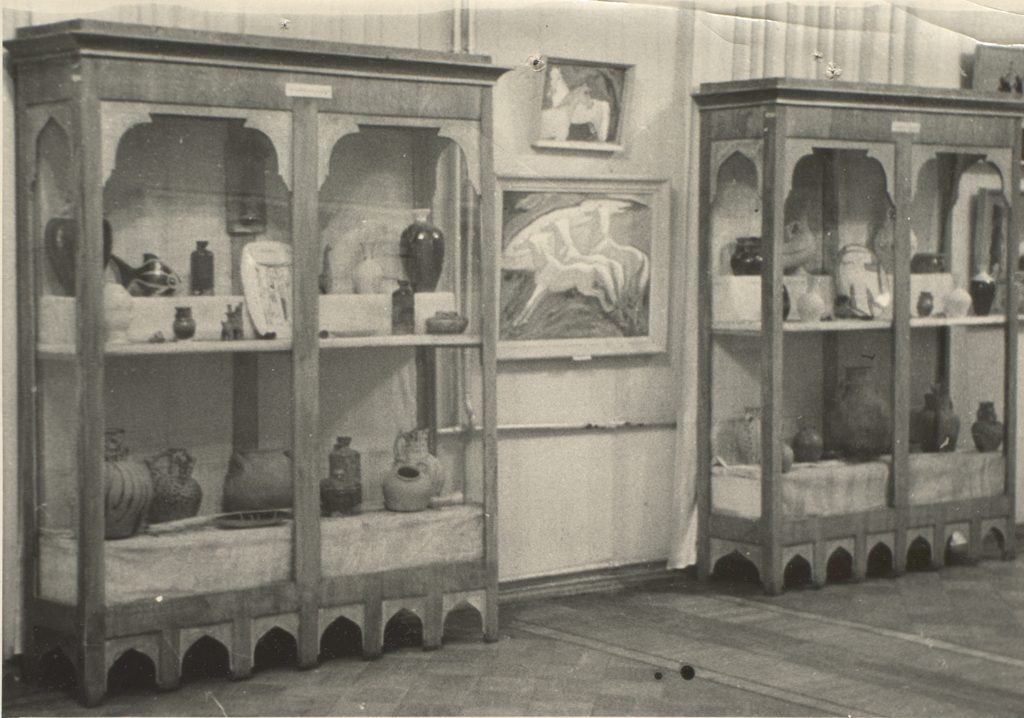
Iraqi modern art exhibition at the Azerbaijan National Museum of Art in Baku. Source: the Russian State Archive of Literature and Arts
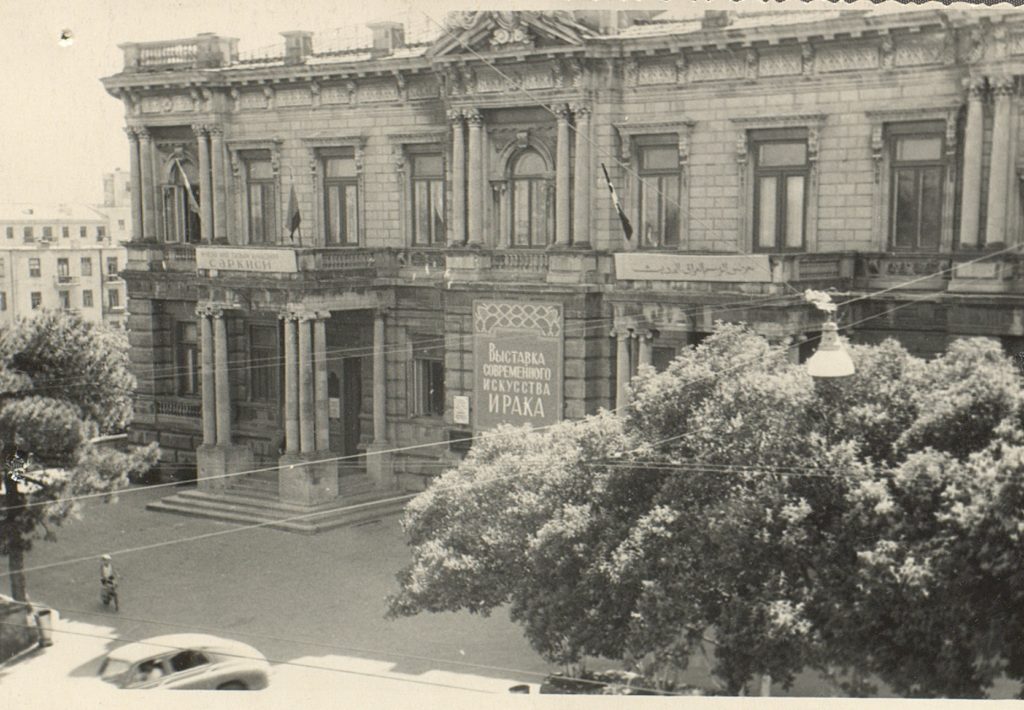
Iraqi modern art exhibition at the Azerbaijan National Museum of Art in Baku. Source: the Russian State Archive of Literature and Arts
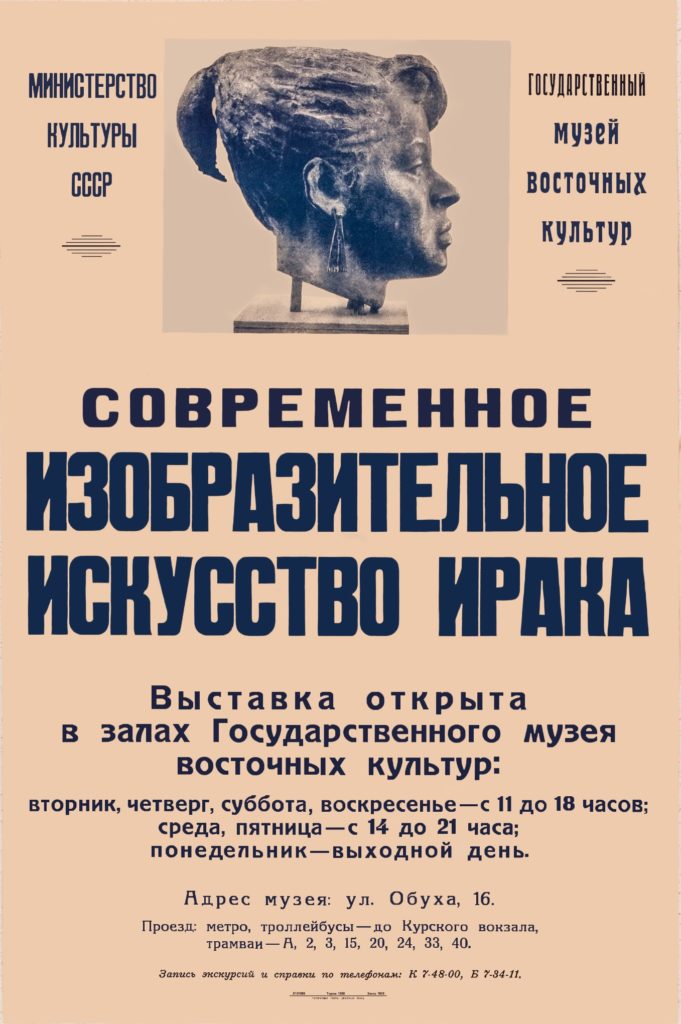
The official poster of the first Iraqi modern art exhibition in the USSR in 1959, Moscow’s State Museum of Oriental Art. Source: the Russian State Archive of Literature and Arts

